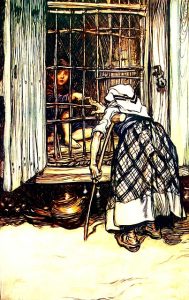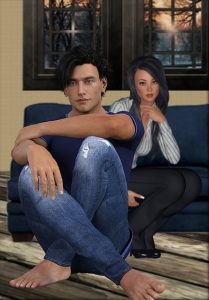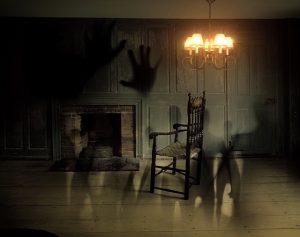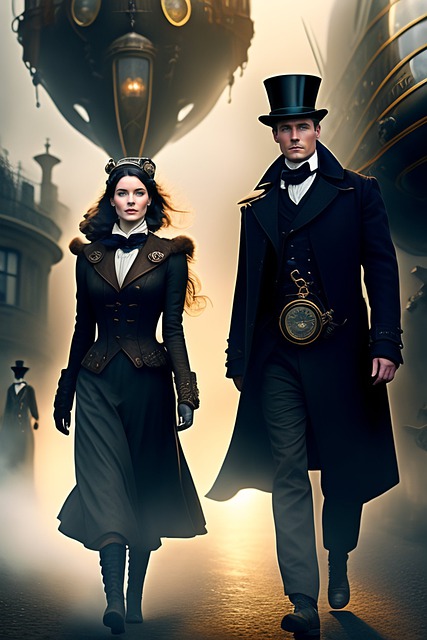If you’ve ever wanted to explore your inner thriller writer, now is your chance! This blog has compiled 20 short story ideas tailored explicitly to thrillers, giving you all the tools you need to create a suspenseful and thrilling story.
From subplots and hidden secrets to unexpected twists and turns, these short story ideas will help you unleash the full potential of your creative writing. So get ready – let the thrilling journey begin!
The concept of writing a short thriller story
Writing a short story can often be an incredibly rewarding and deeply satisfying creative endeavor, but it’s not something that comes easily to everyone. The concept of writing a short story is surprisingly simple – it’s the art of creating a narrative arc with characters, settings, and conflict within just a few pages.
The basic components of a thriller story
Short stories are generally much shorter than full-length novels or even novellas, so there’s often less room for complex plotlines and multi-layered character development. Many great writers have crafted compelling tales within this concise format.
For example, Ernest Hemingway wrote Hills Like White Elephants in only nine pages; Franz Kafka constructed the eerie Metamorphosis in 30; John Steinbeck penned his famous work The Pearl in 15; and Arthur C. Clarke crafted The Star in just eight!
Thrillers are among the most thrilling and entertaining genres in literature, film, television, and theater. At its core, a successful thriller includes four main components: plot, characters, tone, and climax. Here’s a quick overview of what makes a thriller story so captivating:
Plot

Thriller stories are all about unexpected twists and turns that leave readers wondering what will happen next. They feature a protagonist pursuing a goal who encounters various obstacles, from criminals or antagonists with evil intentions to natural disasters or other external conflicts – to reach their destination.
The plot must be full of intense action scenes and realistic scenarios so that readers can connect with it emotionally. Examples include Jurassic Park by Michael Crichton; The Da Vinci Code by Dan Brown; Red Dragon by Thomas Harris; and Girl on the Train by Paula Hawkins.
Characters
A good thriller needs dynamic characters who are easy for readers to relate to yet compelling enough to drive the story forward. Each character should have morals, motivations, desires, fears, secrets, weaknesses, etc., making them complex individuals with unique backstories that readers can empathize with but rise above as heroes when faced with danger at every turn.
Examples include Rachel Watson from Girl on the Train; Jack Reacher from Lee Child’s series featuring him as the lead character; Professor Robert Langdon from The Da Vinci Code trilogy; Hannibal Lecter from Red Dragon and Silence Of The Lambs trilogy, among many others.
Tone
Creating an appropriate tone is essential if one wishes for their thriller story to be truly captivating for its audience members! Every scene should carry a sense of urgency throughout – whether through suspenseful music playing in the background or through spooky dialogues between characters, allowing readers never to get too relaxed, which would break any sense of tension built up within them until then. Examples include Saw (2004), The Conjuring (2013), and Insidious (2010), among many others.
Climax
Above all else – no end will be rewarding without an adequate grand finale provided from its plot twist uprisings over prior acts. Some may even shock us when they come about. The unpredictable outcomes make all those plunging roller coaster readings worthwhile once paid off accordingly once the climax approaches at full speed ahead!
For example, The Girl With The Dragon Tattoo is one novel that did this quite masterfully when Lisbeth Salander chooses her path despite immense forces seemingly beyond her complete control.
20 short thriller story ideas

Experiment with one of these short story prompts and watch where it takes you!
1. The Disappearance: A family’s youngest child goes missing without a trace, and they soon discover that their quiet suburban life isn’t perfect.
2. Deadly Betrayal: After becoming close friends with an old classmate, one discovers dark secrets behind his seemingly perfect life.
3. Murder in the Library: A young librarian makes a shocking discovery while cleaning up late one night.
4. The Uninvited Visitor: A family discovers that their long-time house guest is not who they thought they were and that their lives are in danger.
5. Vanishing Memories: After suffering from amnesia, one must unravel the mystery of his past before it’s too late.
6. The Trail of Terror: An innocent journey turns into a terrifying adventure when danger lurks around every corner.
7. A Fatal Mistake: A mistake made in the line of duty leads to dire consequences for one police officer, and only they can save themselves from total disaster.
8. Death in the Park: Friends must solve a murder case before their lives are at risk.
9. The Secret Room: An old mansion hides an unsettling secret that threatens to unravel everything.
10. Blackmailer’s Paradise: Someone is looking for revenge, and they’ll stop at nothing to get it – even if it means ruining the lives of everyone involved.
11. The Killer in the Dark: After gruesome murders, one must face their fears to catch the killer and bring them to justice.
12. Terror on Wheels: A road trip turns into an adventure when a mysterious traveler follows close behind.
13. A Deadly Discovery: An archaeologist unearths a discovery that could spell disaster for the entire world.
14. The Perfect Crime: Someone is plotting the perfect crime, and only one person can stop them in time.
15. Double Crossed: A double-agent must choose between loyalty to their job or an old friend when both sides are after the same thing.
16. Hostage Situation: A hostage situation turns into a thrilling battle of wits and courage when one person tries to rescue the hostages without getting caught.
17. The Final Showdown: When an old foe returns, one must face them head-on to protect their home and loved ones.
18. The Inescapable Trap: Someone falls into a deadly trap they must find their way out of before time runs out.
19. The Perfect Storm: When all the evidence points in one direction, one must race against the clock to uncover the truth before it’s too late.
20. Death at Sea: Friends head out on a cruise only to discover that danger lurks beneath the waves.
Or better yet, come up with your own story ideas. For example, your main character wakes up one morning to find she’s a man…
How to develop a story idea into a fully formed plot

Creating a story idea into a fully formed plot involves several key steps:
This includes brainstorming the basic concept, fleshing out the characters and setting, outlining an event timeline, and adding details such as foreshadowing and symbolism.
– The first step is to develop an intriguing premise for your story. Start by asking questions such as “What is the major conflict in my story?” and “Who are the main characters?”. Once you have a basic concept, brainstorm more specifics, such as setting details, character motivations, and periods.
– The next step is to create an outline of your plot. Start by sketching out a timeline of events and jotting down key elements such as rising action, climax, and resolution. At this stage, it is essential to consider how these elements will move the plot forward and keep readers engaged in your story.
– Once the basic structure has been established, it is time to flesh out the details. Consider adding foreshadowing to hint at upcoming events or symbolism to develop deeper layers of meaning. Additionally, focus on character development by exploring their motivations and providing insight into their worlds.
– Finally, it is essential to consider your story’s overall theme or message. A well-crafted plot is incomplete without a clear purpose that connects all these elements. Ask yourself questions such as “What is the main idea I am trying to convey?” and “How will this story leave readers feeling when they come to its end?”.
Following these steps, you can develop your story idea into a fully formed plot that captivates readers. From crafting an intriguing premise to considering purposeful themes,
Tips on building suspenseful scenes for maximum effect

Building suspenseful scenes for maximum effect requires careful consideration of elements such as pacing, tone, and setting.
– First, establish a consistent pace that builds tension over time. Use slow zooms to draw out the suspense and avoid rushing through critical moments in your story. Additionally, challenge yourself to leave some questions unanswered throughout the scene to keep readers curious and engaged.
– Second, craft a scene with a consistent tone that conveys the right emotions. Play around with varying levels of intensity to create dynamic shifts when necessary. For example, you can start slowly and build tension until it reaches its peak moment for maximum effect.
– Finally, use the setting to create an immersive experience for readers. Incorporate sensory details such as sound, smells, or atmosphere to create a vivid environment that comes alive in readers’ minds.
– Additionally, focus on building suspenseful atmospheres through props and lighting that will leave readers unsettled.
By considering these elements when crafting scenes, you can ensure maximum effect and keep your readers glued to the edge of their seats.
Conclusion
Writing a thriller story can be one of the most creative and fulfilling ways to use your imagination. Not only will you be able to come up with imaginative ideas, but you will have the ability to develop them into fully-formed stories that will transport your readers into a world of suspense, intrigue, and mystery.
Whether you take inspiration from writing prompts or develop your plot entirely independently, there are many great opportunities to craft fun and exciting short story plots that will leave people wanting more.
Remember to keep it fun; don’t be afraid to experiment and take risks. There is no right or wrong way to write a thriller story – it’s completely up to you!
Thank you for taking the time to read. May you find success and joy in all that you create.
If you’re working on your first novel and are looking for more help with your writing, please check out my other articles at https://ullahakanson.com/blog/
Best of luck with your writing!
Ulla
www.ullahakanson.com

